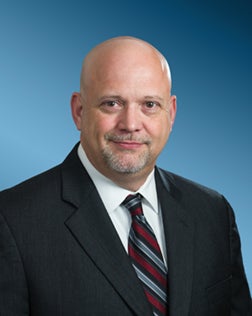 A MESSAGE FROM YOUR GENERAL MANAGER/CEO
A MESSAGE FROM YOUR GENERAL MANAGER/CEO
GARY RAYBON
Cooperation Powers You
When your power goes out, your first response is probably to alert Wharton County Electric Cooperative. After all, WCEC is the name that appears on your electric bill. We deliver power to your home, and when there’s an issue with that power, it’s typically our employees who are tasked with getting your lights back on.
But that’s just a small part of the vast infrastructure required to light up your home. Your local co-op builds and maintains the lines and equipment that deliver power, but we don’t generate electricity. That’s the job of our generation and transmission cooperative.
G&T cooperatives are wholesale power suppliers owned and governed by electric distribution co-ops, like WCEC. They produce electricity directly or buy it in bulk from other companies, then dispatch that electricity over high-voltage transmission lines to local distribution cooperatives.
Our primary G&T is South Texas Electric Cooperative, which generates its own electricity and purchases power from other providers. South Texas EC’s energy mix includes natural gas, coal and renewables.
Just as you are a member of WCEC, WCEC is a member of South Texas EC. In all, STEC’s nine member co-ops serve hundreds of thousands of consumer-members like you across 47 South Texas counties. STEC itself is also a member of San Miguel Electric Cooperative, another G&T that owns and operates a 391-megawatt lignite coal-fueled power plant.
By joining forces with other distribution cooperatives through the G&T, we reduce our individual costs. STEC’s diverse energy mix combined with the long-term nature of our power purchase agreements help maintain reliability and price stability.
That said, we can’t control every aspect of our power costs. Fuel supply fluctuations, extreme weather and unexpected events can cause the cost of power to surge.
When power costs increase, STEC passes those costs along to its member co-ops. WCEC covers those costs through a component on your bill that adjusts to reflect changes in the price of electricity (shown as GCRF and TDCRF on your bill). We collect only the amount needed to cover the power costs, and if the market cost of power drops, so does your bill.
WCEC doesn’t mark up the cost of power to turn a profit—nor does STEC. Rather, any revenue we receive in excess of our expenses is called margins. As member-owned electric cooperatives, we allocate those margins to you—the members—as capital credits and eventually return that money to you when it becomes financially feasible.
The capital credits that STEC allocates to WCEC flow through to you as well—because you share in the ownership of the G&T.
Capital credits are an integral part of Members’ Economic Participation, one of the seven principles that guide all co-ops and allow us to deliver on the promise of safe, reliable and affordable electricity.
People—not profits—that’s the co-op way.

 A MESSAGE FROM YOUR GENERAL MANAGER/CEO
A MESSAGE FROM YOUR GENERAL MANAGER/CEO